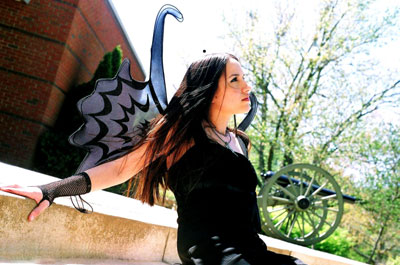All Nonfiction
- Bullying
- Books
- Academic
- Author Interviews
- Celebrity interviews
- College Articles
- College Essays
- Educator of the Year
- Heroes
- Interviews
- Memoir
- Personal Experience
- Sports
- Travel & Culture
All Opinions
- Bullying
- Current Events / Politics
- Discrimination
- Drugs / Alcohol / Smoking
- Entertainment / Celebrities
- Environment
- Love / Relationships
- Movies / Music / TV
- Pop Culture / Trends
- School / College
- Social Issues / Civics
- Spirituality / Religion
- Sports / Hobbies
All Hot Topics
- Bullying
- Community Service
- Environment
- Health
- Letters to the Editor
- Pride & Prejudice
- What Matters
- Back
Summer Guide
- Program Links
- Program Reviews
- Back
College Guide
- College Links
- College Reviews
- College Essays
- College Articles
- Back
Dear Colleges: About Your Letters MAG
As a high school student, I know that after students take the PSAT or PLAN tests, they begin to get tons of mail from colleges. While this is exciting, the sheer magnitude can be monotonous. Eventually, only letters stand out and are read; the rest go directly into the trash. The chance of a student following up and finding out more about the college declines. So, I have prepared this article on what I - a high school student - find appealing in these letters.
Short is better. Not that you should severely limit what you say in a letter, but definitely don’t add fluff to make it longer. Students are more likely to read a shorter letter than a long one. Make sure whatever you say is necessary and contains substance.
Generic phrases that could apply to almost any college are useless. Buzzwords like “exceptional teachers” and “beautiful campus” don’t convince anyone that your college stands out. They just take up space. It also begs the question, “Why should I believe you?” Opinionated statements that cannot be proven will be met with skepticism.
If you have statistics, use them. Don’t be afraid to brag. When comparing college advertisements, facts about the college are really the only substantial things that stand out. If your college was ranked top in U.S. News and World Report or the Princeton Review for five years in a row, say so. Mind you, bad statistics are best left out. It seems obvious, but every so often I get a letter boasting something like “ranked in the top thousand for liberal arts students residing in Missouri to go on to travel internationally.” While this may be a positive, it is not impressive, and it suggests that this is all the college has to offer. Better just leave it out.
Make it organized. No one likes reading through lengthy paragraphs full of seemingly random facts and figures, mixed with fluff and compliments. Each paragraph should be short - just a few sentences - and have a definite point. If you are using a pamphlet or other medium with plenty of space, it helps to write the topic above the words. Tables can also be used to convey statistics and other facts easier.
Flattery is just irritating. Statements like “Since you did well on a test” and “I’m sure other colleges are contacting you” are seen over and over in these letters. But students know that no one is really writing to them personally and that their names are just selected by a computer. Students don’t like to feel they are being manipulated, and vague information that is supposed to apply to them - flattery and other indications that the college knows them personally - just seem fake.
However, if you do know something about the student - say, her intended field of study - using that can catch a student’s eye. If the student mentioned she is interested in business, having the computer input a paragraph about related internships would definitely be interesting to students.
Pictures help. While they may not get students scrambling to fill out applications, at least they will catch their attention. I find shots of landscape and architecture of the campus are more effective than photos of happy students - they make the college stand out in its own right. Every college has students, but not every one is located next to a gorgeous beach, or has gothic towers, or scenic parks filled with modern art.
Make it easy to find more information. If you create a brochure that gets students interested and wanting to find out more, make it simple to do that. We are a lazy and easily distracted bunch - filling out forms and mailing them back is probably not going to happen. Having a website - possibly with an already created user name and password - is much better. Don’t lose our interest once you’ve attracted it.
I hope all you colleges out there are now more aware of some of the pet peeves and positive attributes of a college letter in the eyes of a high school student. Hopefully, these will help you make the most of the time and energy put into these promotional letters.


0 articles 0 photos 12292 comments